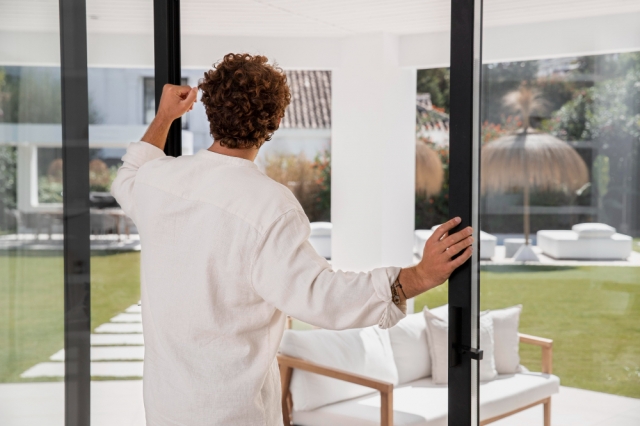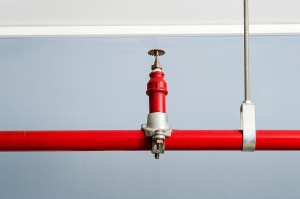Understanding Window Lifespan and Natural Wear
Windows, like any home component, have a natural lifecycle. Understanding this helps homeowners make informed decisions about maintenance and replacement timing. Research indicates windows typically last 15-30 years, depending on material, climate, and maintenance levels.
The degradation process happens gradually. UV rays break down materials, temperature fluctuations stress frames and seals, moisture infiltrates tiny gaps. It's physics and chemistry working against your home's envelope. Not dramatic, just inevitable.
Different materials age differently. Wood windows in dry climates might last decades with proper maintenance. Those same windows in coastal areas? Lucky to make it 15 years. Vinyl handles temperature swings better but can become brittle over time. Aluminum conducts temperature too well, creating condensation problems. Each material has its timeline and telltale aging signs. Understanding Window replacement in Calgary considerations means recognizing these patterns in your specific environment.
The Science Behind Seal Failure
Double and triple-pane windows rely on sealed air spaces for insulation. These spaces often contain argon or krypton gas - denser than air, better at reducing heat transfer. When seals fail, this gas escapes, replaced by regular air and moisture.
The visual sign? Fogging between panes that can't be cleaned. This isn't just aesthetic. Once moisture enters, it cycles through evaporation and condensation daily. This leaves mineral deposits, creating that permanent cloudy appearance. More importantly, the window's insulation value drops significantly.
Seal failure typically starts at one corner or edge, spreading over months or years. Temperature differentials stress the seals - hot sun on one side, cool interior on the other. The materials expand and contract at different rates. Eventually, the seal gives up. It's material science, not poor quality necessarily. Even premium windows face this eventually.
What accelerates seal failure? Improper installation leads the list. Windows not perfectly square in their frames stress unevenly. Water pooling on sills penetrates seals faster. Southern exposures face more UV degradation. These factors can cut window lifespan in half.
Mechanical Problems: More Than Just Annoyance
Windows that stick, won't stay open, or require force to operate indicate deeper issues. The inconvenience masks potential safety concerns and energy losses.
Balance mechanisms in double-hung windows use springs or weights to counterbalance sash weight. When these fail, windows slam shut unexpectedly or won't stay open. It's not just frustrating - it's dangerous. Children's fingers, pets' tails, your own hands while cleaning - all at risk.
Crank mechanisms in casement and awning windows wear out through normal use. Gears strip, handles break, arms bend. Once mechanical parts fail, the window can't seal properly even when "closed." That eighth-inch gap might look minor, but it's a highway for air infiltration.
Swelling frames indicate moisture intrusion. Wood swells obviously, but vinyl and fiberglass can warp too. Once frames distort, they never return to the original shape. The window might close, but it's not sealing. Every operation damages it further.
Energy Efficiency and Modern Standards
Energy standards have evolved dramatically. Windows from even 10 years ago can't match current technology. Low-E coatings, improved gas fills, better frame materials - the improvements compound.
According to energy auditors, old windows can lose up to 30% of heating and cooling energy. That's not just about money - it's about comfort. Drafty rooms, cold spots near windows, overworked HVAC systems struggling to maintain temperature.
Modern windows achieve U-factors below 0.20 - that's five times more efficient than single-pane windows. The difference is measurable in both comfort and costs. Room temperatures stay consistent. HVAC systems cycle less frequently. The entire home ecosystem works more efficiently.
Theodore Roosevelt said, "In any moment of decision, the best thing you can do is the right thing, the next best thing is the wrong thing, and the worst thing you can do is nothing." With windows showing efficiency problems, doing nothing means accepting ongoing energy waste and discomfort.
Health and Safety Considerations
Indoor Air Quality Issues
Failing windows affect more than temperature. They impact air quality, humidity levels, and ultimately, health. Drafty windows create pressure imbalances, pulling in unfiltered outdoor air along with pollutants, allergens, and moisture.
Condensation on windows isn't just annoying - it's a moisture source feeding potential mold growth. Mold spores affect respiratory health, trigger allergies, and can cause serious reactions in sensitive individuals. Window sills showing black spots or discoloration often indicate hidden mold in surrounding walls.
Old windows might contain lead paint, especially in homes built before 1978. Deteriorating paint on window sashes and frames creates lead dust - particularly dangerous for children. The friction from opening and closing windows generates more lead dust than static painted surfaces.
Structural Integrity Concerns
Water infiltration around failing windows causes cascading damage. It starts small - paint bubbling, slight discoloration. Left unchecked, it progresses to rotted framing, compromised insulation, and structural weakness.
The damage often hides inside walls. By the time it's visible, extensive repairs might be needed. Homeowners discover this during renovations, finding destroyed insulation, mold colonies, or rotted studs. Prevention through timely window replacement costs far less than structural repairs.
Benjamin Franklin's wisdom applies: "An ounce of prevention is worth a pound of cure." Addressing window problems early prevents exponential damage growth.
Cost-Benefit Analysis of Repair vs. Replace
The repair-versus-replace decision involves multiple factors. Age matters - investing in major repairs for 20-year-old windows rarely makes financial sense. Minor repairs on newer windows? Absolutely worthwhile.
Common repairs and their effectiveness:
- Weather stripping replacement: temporary fix, lasts 2-3 years
- Sash cord replacement: restores function but doesn't improve efficiency
- Re-glazing: addresses single panes but labor-intensive
- Hardware replacement: solves mechanical issues if frames remain sound
When repair costs exceed 50% of replacement cost, replacement typically makes more sense. Factor in ongoing energy losses, comfort issues, and potential damage from failing windows. The math often favors replacement sooner than homeowners expect.
Consider opportunity cost too. Time spent on repeated repairs, seasonal plastic film installation, draft hunting - it adds up. Quality of life matters beyond pure economics.
Planning Your Next Steps
Recognizing replacement need is step one. Planning the project prevents rushed decisions and poor outcomes.
Start with honest assessment. Document problems with each window - photos help. Note orientation, size, and specific issues. This preparation makes contractor consultations more productive.
Research timeline considerations. Window manufacturing typically takes 4-8 weeks. Installation adds days to weeks depending on quantity. Planning around weather, holidays, and life events prevents stress.
Budget beyond the windows themselves. Installation, disposal, potential trim work, and interior touch-ups add 30-50% to window costs. Financing options exist - from manufacturer programs to home improvement loans to energy-efficiency incentives.
Gather multiple perspectives. Three quotes minimum reveals price ranges and different approaches. Ask about warranties - product and installation separately. Understanding what's covered prevents future surprises.
Consider phased replacement if budget constraints exist. Prioritize based on condition, not aesthetics. The failing bedroom window causing drafts matters more than the functional but ugly bathroom window.
For historic homes, research restrictions before planning. Some districts require specific styles or restoration instead of replacement. Know the rules before investing time in planning.
The decision between living with deteriorating windows and addressing the problem isn't really a decision - it's a timing question. Windows will continue declining. Energy costs keep rising. Comfort problems worsen. The question becomes: address it proactively or reactively?
Smart homeowners recognize the signs, understand the implications, and plan accordingly. Whether that means budgeting for future replacement, starting the quote process, or scheduling installation - action beats inaction.
Windows frame our view of the world and protect us from it. When they stop doing their job effectively, our homes and lives suffer unnecessarily. Recognizing the signs early and understanding options empowers better decisions.
The path forward varies by situation, but ignoring deteriorating windows never improves outcomes. Knowledge, planning, and timely action - that's how smart homeowners handle window replacement decisions.






